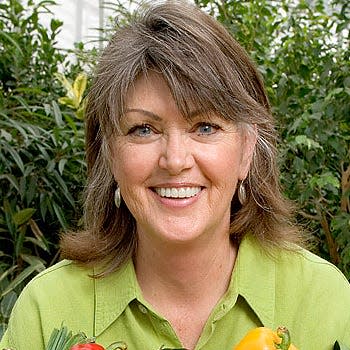Gardening for You: Save seed for next season
As this year’s growing season is ending, our mind wanders to next year’s garden. Saving seed is a no-cost way to assure gardens have repeats of favorite flowers. Self-saving seed is a rewarding activity but there is a caveat.
When collecting seed from flowering plants it is good to know beforehand whether the mother plant is an open-pollinated or an F1 hybrid variety.

Seeds harvested from open-pollinated varieties will breed true; seeds harvested from the mother plant will produce a plant that is the same as its mother plant. Seed from open-pollinated varieties is produced in blocks of the same variety grown in open fields where pollinators freely travel from plant to plant. Pollen is disseminated among many plants. Mature seed is harvested from the large block plantings, cleaned and bulked together then packaged for sale.
Heirloom varieties have been passed down through many generations. All heirloom varieties are open-pollinated and will produce plants that are the same as the mother plant.
Seed from F1 hybrid plants will not breed true. F1 hybrid varieties are bred using controlled pollination either in enclosed structures or in fields isolated from other varieties with no chance of the introduction of stray pollen. Parents of F1 hybrids are genetically distinct. Male parents and female parents are selected for unique characters that will be combined and passed to the progeny, the new generation.
Crosses to produce an F1 hybrid variety must be repeated for each new generation. Seed harvested from an F1 hybrid reverts to parental undesirable types. To be certain that faithful duplicates are produced, seed from F1 hybrids must be purchased fresh each year.
Easy annuals from which to harvest seed:
Bachelor’s Button (Centaurea cyanus)
Calendula (Calendula officinalis)
Columbine (Aquilegia)
Cockscomb (Celosia cristata)
Coneflower (Echinacea purpurea)
Cosmos (Cosmos)
Hollyhock (Alcea rosea)
Larkspur (Consolida ajacis)
Marigolds (Tagetes)
Nasturtiums (Tropaeolum)
Oriental poppies (Papaver orientale)
Shasta daisies (Leucanthemum x superbum)
Strawflower (Xerochrysum bracteatum)
Sunflowers (Helianthus annuus)
Zinnia (Zinnia elegans)

Choose robust, healthy flowers. Let blooms dry on the plant and seed completely mature. Snip off heads directly into paper bags or cup seed with your hand to collect strays. Label with variety name. Store dry, in the dark, and enjoy next summer.
Ellen Peffley taught horticulture at the college level for 28 years, 25 of those at Texas Tech, during which time she developed two onion varieties. She is now the sole proprietor of From the Garden, a market garden farmette. You can email her at gardens@suddenlink.net
This article originally appeared on Lubbock Avalanche-Journal: Gardening for You: Save seed for next season

